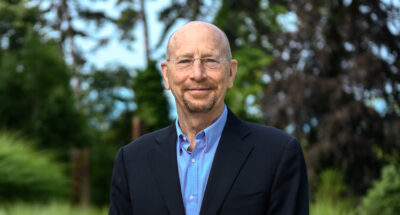
“We were so scared of our IPO”: Leaders Unplugged with former On-CEO Marc Maurer
Marc Maurer shares how ON grew from startup to IPO by defying hype, focusing on purpose, and leading with humility in this candid Leaders Unplugged episode....

by Shelley Zalis Published March 4, 2025 in Leadership • 4 min read • 
I believe in the transformative strength of a “we” culture – one that prioritizes shared leadership, collaboration, and a foundation of respect and kindness in every interaction. Conscious leadership drives this transformation by challenging traditional power structures and reshaping them into shared responsibility rather than hierarchical control. This shift is essential in building workplaces where everyone feels valued and empowered to lead.
In a conscious workplace, influence is not about authority over others; it’s about using one’s role to create an environment where everyone feels respected and capable of contributing to the organization’s success. Conscious leaders nurture a culture of inclusivity: leadership that flows from the top down, bottom up, and all around. This environment – where respect, kindness, and empathy thrive – fosters innovation and collaboration.
Alison Fragale, author of Likeable Badass, highlights a critical distinction between power and status. Power is control over resources like authority, money, or information, while status is about the respect one commands. Many organizations focus on power without recognizing the importance of status, leaving leaders with authority but without the respect they need. This dynamic is especially challenging for women, who are disproportionately affected by incivility in the workplace. McKinsey reports that for every senior woman promoted, two leave, often due to exclusion or their judgment being undermined. A conscious approach to leadership can address this by cultivating both power and status through respect, kindness, and inclusion.
Research consistently shows that companies with inclusive cultures are 35% more likely to outperform their competitors. When employees feel valued, retention improves, and turnover costs – often reaching 33% of an employee’s salary – are reduced. This shift toward inclusivity begins with hiring. Traditional hiring often emphasizes individual achievements and the potential for hierarchical advancement. However, in a conscious workplace, the focus is on finding people who align with the organization’s mission and values and can contribute to shared leadership, adaptability, and collaboration.
Jeff Berman, CEO of content media company WaitWhat, attributes his success to building high-performing teams through a unique approach to hiring: he looks for “lifers” – individuals who can grow with the organization. Emphasizing culture fit and resilience, he asks questions that reveal a candidate’s problem-solving abilities and collaborative skills. He highly values strong communication, especially active listening, to ensure diverse perspectives are heard. Integrity is another cornerstone. “Word has to be bond,” he says, underscoring that trust is foundational to shared leadership.

“ Tools like a 'kindness barometer' or a 'care barometer' could assess how well companies integrate empathy into their leadership models.”
Beyond hiring, conscious leadership means creating environments where care, kindness, and empathy are central. James Rhee, author of Red Helicopter, advocates the power of kindness in organizations, showing how empathy and gratitude can create workplaces where people thrive. Expressing gratitude in the workplace is more than a feel-good gesture; it has measurable impacts. A Harvard Business Review study found that teams led by leaders who regularly express gratitude are 50% more productive. LinkedIn’s Workforce Study showed that recognizing contributions results in 73% higher engagement and 82% greater job satisfaction. Gratitude fosters respect, which in turn drives collaboration, but it’s essential to measure what matters.
Traditional metrics like financial performance and hierarchical advancement tell only part of the story. For meaningful change, we need to evaluate qualities such as empathy, kindness, collaboration, and care. Tools like a “kindness barometer” or a “care barometer” could assess how well companies integrate empathy into their leadership models. Organizations such as Great Place to Work and The Happiness Index measure aspects of culture and well-being, but we need more specific assessments of conscious leadership’s impact on employees.
Deloitte’s research shows that companies with inclusive leadership – where influence is shared and voices are heard – are twice as likely to meet or exceed financial targets. They are also six times more likely to be innovative and agile.
Indeed, when influence is shared and leadership distributed, companies perform. The 2018 Global Leadership Forecast found that organizations prioritizing shared leadership experience 4.5 times higher leadership quality and are 29% more likely to foster teams that drive innovation. Google’s Project Aristotle discovered that psychological safety – not hierarchy or seniority – is the key to high-performing teams. When employees feel safe to share ideas and take risks, creativity and innovation flourish, just as a “we” culture promotes.
Moreover, the best qualities of conscious leaders – care, passion, kindness, and collaboration – are inherent in caregivers. Yet millions of caregivers, primarily women, leave the workforce due to the demands of caregiving, taking these leadership qualities with them. By better-supporting caregivers, companies not only retain great leaders but also preserve the qualities that drive success in a conscious workplace.
At its core, conscious leadership recognizes that a little gratitude, care, and kindness go a long way. By focusing on conscious hiring, sharing power, and the transformative influence of empathy, we can redefine leadership for a new era.

Founder and CEO of The Female Quotient
Shelley Zalis – CEO, Founder, and “Chief Troublemaker” of The Female Quotient – is an entrepreneur, three-time movement maker, and advocate for reshaping the workplace for the modern era. She is redefining leadership and challenging outdated systems.
At The FQ, Zalis built the largest global community of women in business across 30 industries in more than 100 countries. Previously, she transformed market research by founded OTX, later selling it to Ipsos. She co-created #SeeHer, championing accurate portrayals of women and girls in media.
A LinkedIn Top Voice and contributor to TIME and Forbes, Zalis’ accolades include the Global Leaders 50 List and Fast Company’s Brands That Matter.

July 8, 2025 • by Alyson Meister, Marc Maurer in Leadership
Marc Maurer shares how ON grew from startup to IPO by defying hype, focusing on purpose, and leading with humility in this candid Leaders Unplugged episode....

July 7, 2025 • by Richard Baldwin in Leadership
The mid-year economic outlook: How to read the first two quarters of Trump...

July 4, 2025 • by Arturo Pasquel in Leadership
Susanne Hundsbæk-Pedersen, Global Head of Pharma Technical Operations at Roche, shares how she has navigated the various pivots in her career, and the importance of curiosity, optimism and energy. ...

July 3, 2025 • by Eric Quintane in Leadership
Entrepreneurial talent who work with other teams often run into trouble with their managers. Here are ways to get the most out of your ‘boundary spanners’...
 Audio available
Audio availableExplore first person business intelligence from top minds curated for a global executive audience